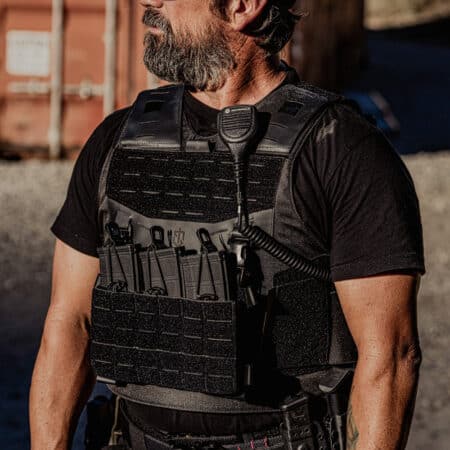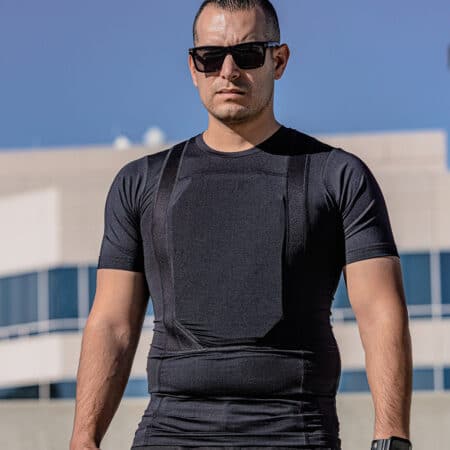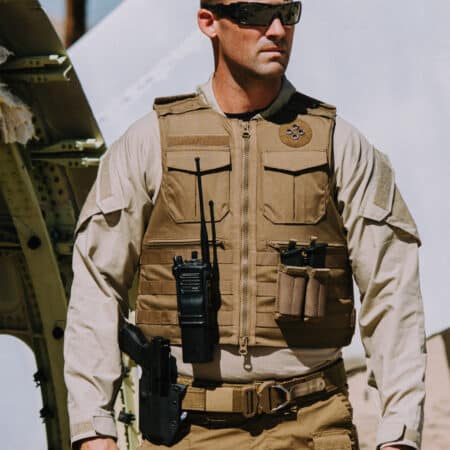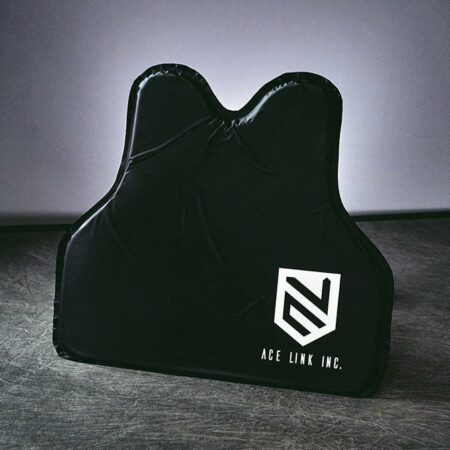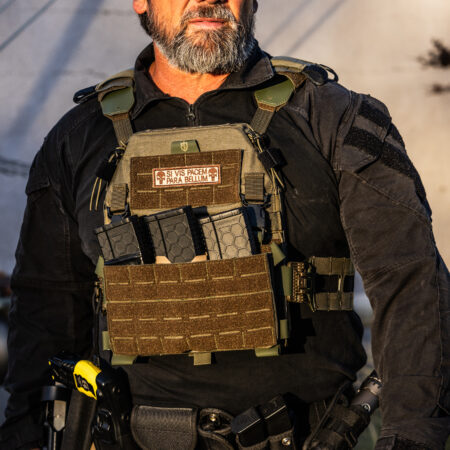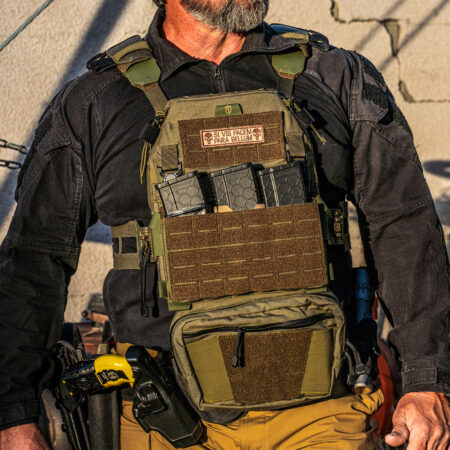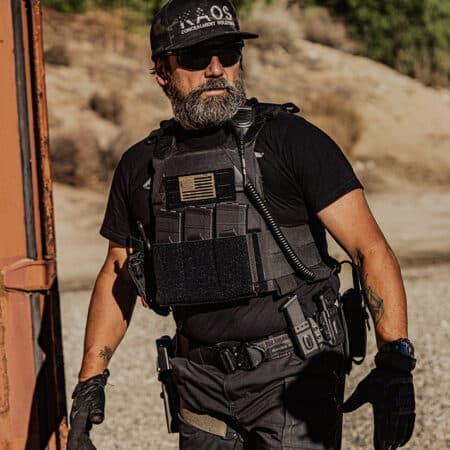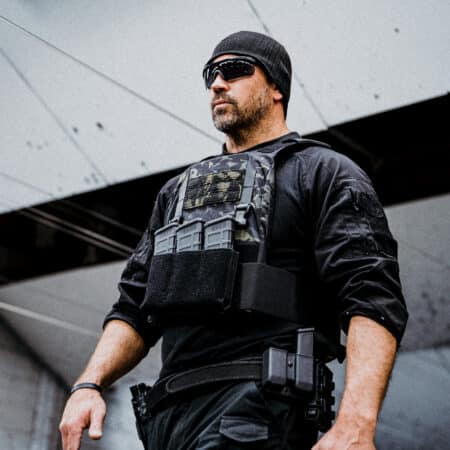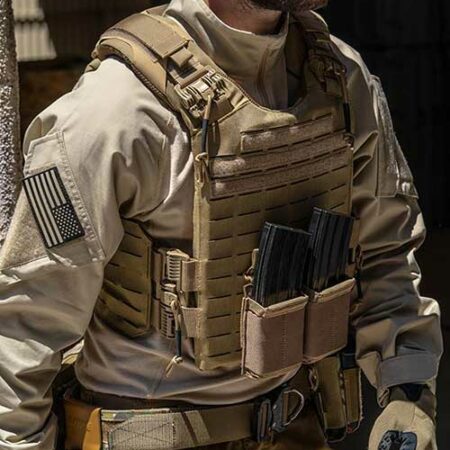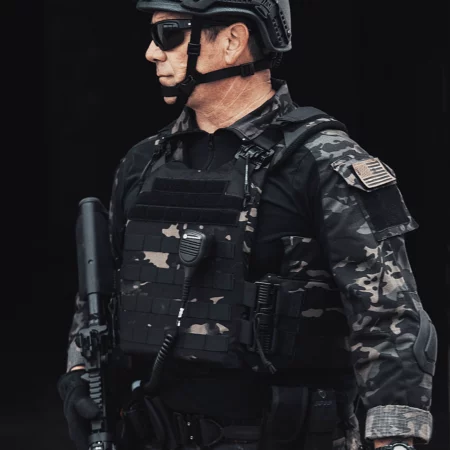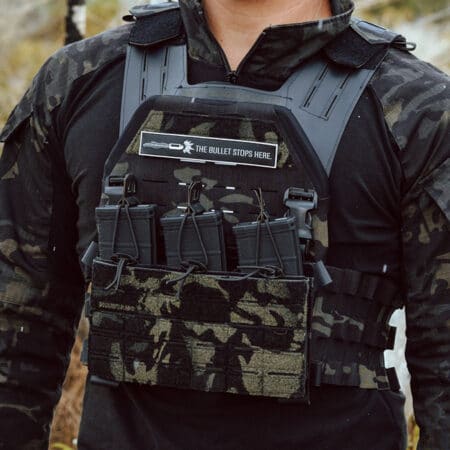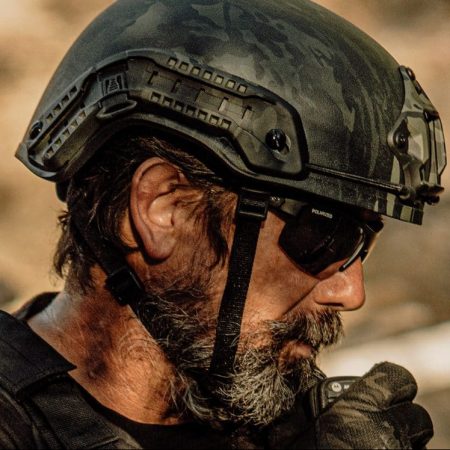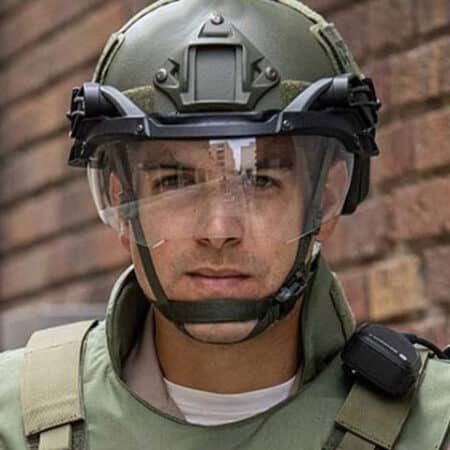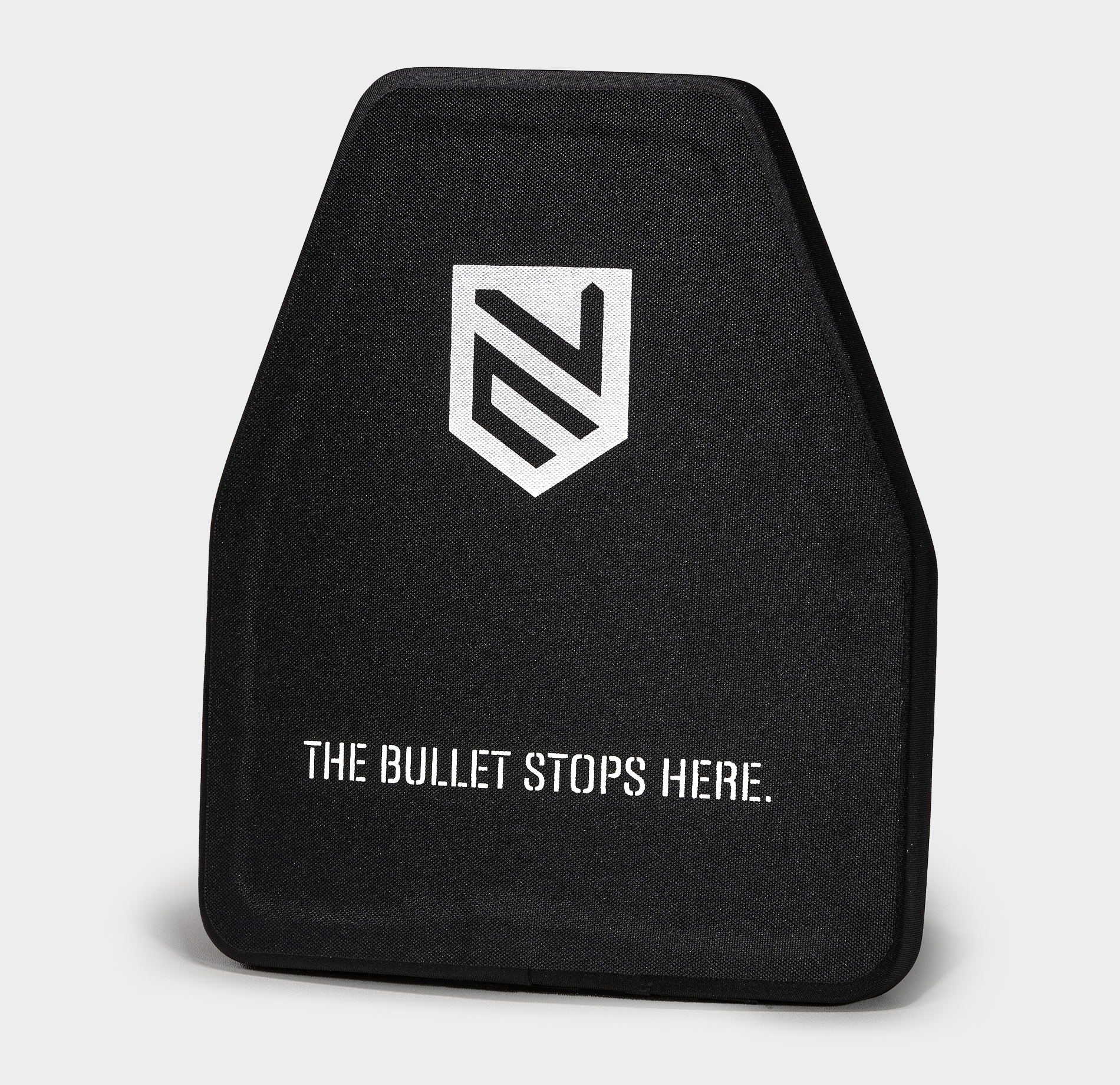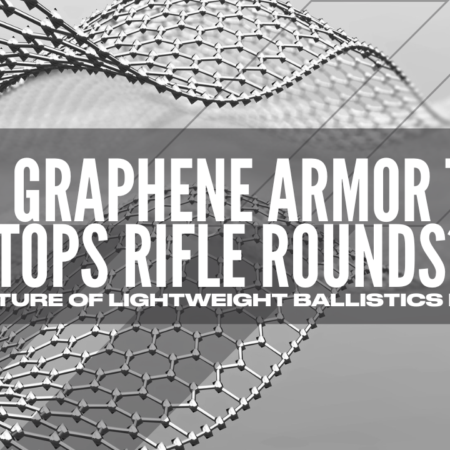- COULD YOU MAKE LEVEL IV BODY ARMOR PLATES WITHOUT CERAMICS?
- WHAT CAN LEVEL IV BODY ARMOR NOT PROTECT AGAINST?
- WHAT IS THE LIGHTEST LEVEL IV BODY ARMOR?
- WHAT ROUNDS OF AMMUNITION CAN PENETRATE LEVEL 4 BODY ARMOR?
- ARE THERE LIGHTWEIGHT LEVEL IV ARMOR PLATES?
- WHAT’S THE DIFFERENCE BETWEEN LEVEL 3 AND LEVEL 4 BODY ARMOR?
- WILL BODY ARMOR STOP A 30-06?
- WHAT CLASS OF BODY ARMOR DOES IT TAKE TO STOP .303 OR 7.62X54R?
- IS LEVEL 4 BODY ARMOR LEGAL?
COULD YOU MAKE LEVEL IV BODY ARMOR PLATES WITHOUT CERAMICS?
Well, in theory, why not, you could make Level IV armor with materials other than Ceramics, however, is it practical? Not really! Typically, level III+ steel plates capable of stopping 5.56 green tip rounds are about 1/2 inch thick, so to make a steel plate capable of stopping a 30.06 round traveling at about 2880 feet per second, you at least need a plate that is 3/4 inches thick.
That is possible, but not practical at all. Moreover, a level IV plate offers ballistic protection against armor-piercing rounds, and their steel or titanium cores don’t break upon impact like normal bullets. This means that the threat of Spalling that is unavoidable with steel plates would be even more prominent.
The fragments from those bullets can be deflected from the steel plates and injure the wearer and the people around them as well. On the other hand, Ceramic plates absorb the fragments of bullets and are better at distributing the impact force of the bullet. Otherwise, a solid hide from a 30.06 on a steel plate could cause enough blunt force trauma on your chest to knock you out or even seriously injure you with broken ribs and punctured lungs.
Therefore, steel plates are not practical. Hence you can’t make practical, usable, and safe level four plates without using ceramics. There are some ceramic-metal and ceramic-polyethylene composite level IV ballistic plates available in the market, but, in any case, ceramics have to be used to make usable level IV ballistic plates.
WHAT CAN LEVEL IV BODY ARMOR NOT PROTECT AGAINST?
According to the standards set by the National Institute of Justice (NIJ), level IV armor plates should stop all calibers up to a 30.06 armor-piercing round. This means that it will stop all rounds that level III body armor, and level IIIa soft armor stops.
As of now, Level IV is the highest level of protection available to military personnel, and when it comes to threats bigger than 30.06, like some sniper rounds, including .338 Lapua Magnum, and 50 BMG, it fails.
Now, these rounds are massive and are equally expensive and difficult to shoot. Realistically, there are very few cases in which military personnel or police officers will have to encounter them on the field.
WHAT IS THE LIGHTEST LEVEL IV BODY ARMOR?
When it comes to body armor, lightweight armor is always preferred. Typically, level IV armor, that is designed to provide protection from large-caliber armor-piercing rounds has to be quite dense, which adds to their weight as well.
Most typical level IV plates are made from either full ceramics, or a ceramic and steel composite, and they weigh about the same. these plates can weigh anywhere from 7 to even 10 pounds, which can make a complete body armor set up very heavy.
However, there are some lighter body armor plates, particularly the Ceramic and PE composite plates made by ace link body armor. These body armor plates have a ceramic strike face with a PE backing, which provides the necessary level of protection while keeping your body armor set up lightweight.
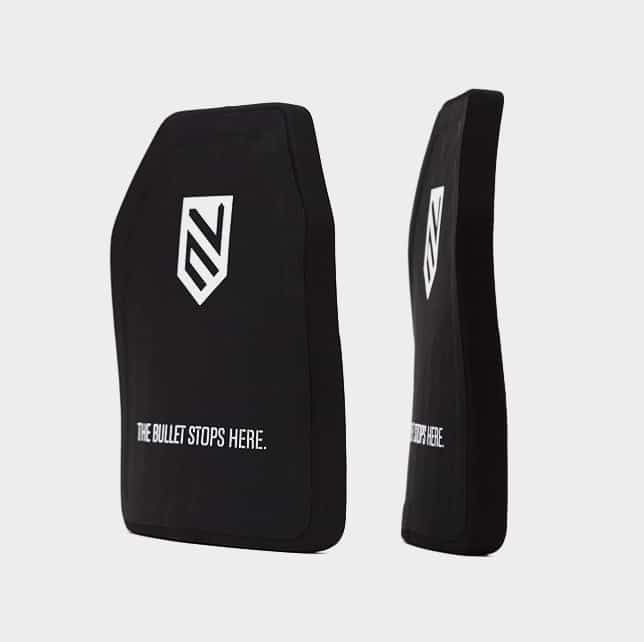
LEVEL 4 SA MULTI-CURVE ARMOR PLATE
one of the lightest Level 4 plates on the market. This Multicurve PE+ Ceramic composite Armor plate offers multiple hit protection against AP rounds, and weighs only 6.1 pounds.
WHAT ROUNDS OF AMMUNITION CAN PENETRATE LEVEL 4 BODY ARMOR?
As you know by now, level IV hard body armor plates are rated to protect you against 30.06 armor-piercing bullets. However, there are many calibers, especially those of certain sniper rifles and machine guns that are heavier than the 30.06 and carry more energy and more speed.
Some rounds that are near the size of the 30.06, like 45-70 government rifle rounds, which are slightly heavier, might not penetrate but could still carry enough force to take you out of the fight, by causing severe blunt force trauma. Moreover, some calibers are just too fast and big for level IV hard armor plates, take .338 Lapua Magnum and 50 BMG are going to go straight through level IV ballistic armor, and in the odd chance that they do stop, they can still carry enough energy to seriously injure you.
ARE THERE LIGHTWEIGHT LEVEL IV ARMOR PLATES?
When it comes to any kind of body armor, whether it is soft body armor or hard armor plates. Weight is a very important factor. Police officers, military personnel, and law enforcement officials have to wear their body armor for extended periods of time in certain tactical situations, and paired with all of their tactical accessories and gear, the weight of the armor can get really heavy, causing fatigue and difficulty in movement and maneuverability.
Therefore, armor companies are always trying to meet the National Institute of Justice body armor standards while keeping the weight of their body armor as low as possible.
Though a bulletproof vest can get very light, with hard tactical armor plates that are carried in plate carriers, weight is always going to be a problem. Typically, Level IV plates can get really heavy, especially the ones that are made with a combination of steel and ceramic layers.
Fully ceramic plates are that light either, however, there are some Level IV ballistic armor plates that have a ceramic strike face and a back face made out of Ultra High Molecular Weight Polyethylene (UHMWPE). These plates are considerably lighter than fully ceramic and ceramic steel composite plates.
Generally, tactical armor plates that offer level IV protection can weigh anywhere from 7-10 pounds, however, the Ace Link armor level IV armor plates are super lightweight and weigh only 6 pounds. It is made from a UHMWPE plate covered with a ceramic strike face to offer high-level Ballistic protection without making you tired.
WHAT’S THE DIFFERENCE BETWEEN LEVEL 3 AND LEVEL 4 BODY ARMOR?
When it comes to body armor protection for rifle rounds, the NIJ specifies two levels of protection, which are Level III and Level IV. Though both are hard armor plates, they have a lot of differences.
Let’s start by talking about the most important difference, ballistic protection levels. Body armor level III is rated by the national institute of justice to provide protection against rifle calibers up to a.308 full metal jacket. This means that it will stop most common rifle rounds including 5.5 AR-15 rounds, and 7.63×39 AK rounds. It will also stop other calibers that are less popular in the US like the Russian 5.45×39 used in the Russian standard issue AK-74 and the standard Chinese 5.8×42 round used in the QBZ assault rifle.
Level IV armor plates have a higher level of protection and can stop rounds up to an armor-piercing .30.06, which is a massive caliber, which was used in the M1 Garand. In the field, the military and law enforcement officials are more likely to face threats like armor-piercing 308 Winchester rounds, which level IV armor can easily handle multiple hits of.
Next up, the major difference in level III and level IV is in the materials that are used for their construction. Level III plates can be made from single layers of different materials including steel, ceramics, or even ultralight UHMWPE, which is a kind of polyethylene. Steel plates are cheap, but because of the problem with spalling, they aren’t great at taking multiple hits after the rubberized strike face is deformed. Even with level III body armor plates, ceramics and polyethylene are much better options.
Level IV armor plates are usually made with a combination of materials, they are made from either a combination of steel and ceramics or polyethylene and ceramics. Some full ceramic level IV plates can also be found in the market.
Lastly, weight is another considerable difference between the two levels. Now, the weight of these plates does vary a lot based on the materials and techniques used by different body armor manufacturers, however, typically, a level IV armor plate is considerably heavier than a level III armor plate.
WILL BODY ARMOR STOP A 30-06?
The 30.06 is a popular caliber, popular for being used in the M1 Garand and some old bolt action rifles. It is also a common hunting caliber used in the Remington 783 rifle and some other similar variants.
Now, when it comes to armed forces, they face the threat of some 30 caliber machine guns that can be chambered in 30.06 or other calibers with comparable size and ballistics. Therefore, they need body armor plates that could defeat such threats.
That is where level 4 ballistic plates come in. level IV, which is the highest level of ballistic protection available in the market, can stop armor-piercing 30.06 rounds, and several similar calibers.
So, if you are thinking of purchasing body armor to defeat the 30.06 calibers, level IV is the way to go.
WHAT CLASS OF BODY ARMOR DOES IT TAKE TO STOP .303 OR 7.62X54R?
One of the most common threats that the US and other NATO troops had to face in Afghanistan was enemy snipers, who in most cases were using the Dragunov or as it is more commonly known the PSL rifle.
This sniper rifle is chambered in the unique 7.62x54r caliber, which is a large and hefty round that carries a lot of energy. Now, NIJ level IV ballistic plates can definitely stop the 7.62x54r from penetrating, it would still cause a lot of blunt force trauma.
There have been accounts of soldiers surviving hits from multiple rounds of 7.62x54r caliber, however, they still ended up in the hospital with bruises, broken ribs, and in some cases punctured lungs as well. Some people with a larger build might be able to stay in the fight after taking a hit from the 7.62x54r round on their body armor plates, however, most averages built men, wearing smaller armor plates will need to spend some time in the hospital even if the round does not penetrate.
IS LEVEL 4 BODY ARMOR LEGAL?
Yes, as far as the laws in the US are concerned, owning and wearing all kinds of soft body armor, hard body armor plates, bulletproof vests and plate carriers are completely legal under federal law. However, there are some conditions.
Firstly, anyone who is convicted of a violent crime can’t legally own or wear body armor in the US, and if they have to do so for their job, that is if they are working as a security guard, or maybe with law enforcement, they need a signed permission letter from their employer to do so.
Secondly, it is also obviously illegal to wear body armor while committing a crime, and it can increase a criminal sentence and charges if they are caught.
You should also be aware of your individual state laws, because in some states, wearing body armor at certain places is prohibited. For instance, the law of Louisiana forbids students from wearing body armor on school property.
If you are thinking about wearing body armor to work, it is also good to check in with the legal department of your workplace.
So, since wearing all kinds of body armor is legal for law-abiding citizens in the US, wearing level IV armor is also completely legal. However, for self-defense applications, level IV armor isn’t practical. Finding concealable armor that offers level IV protection is impossible, and normal body armor plates are too conspicuous and heavy as well.
You’d be better off wearing soft concealable armor bulletproof vests, which offer protection against most pistol calibers, which are the threats faced in most home defense and urban defense situations.




